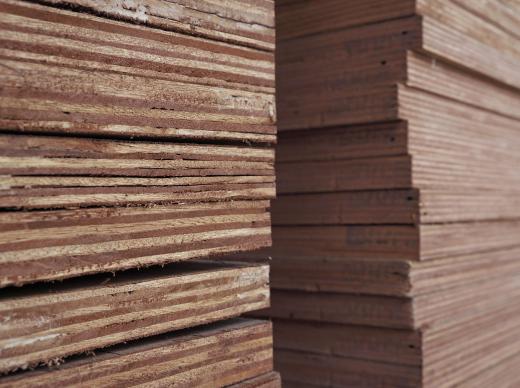Glued laminated timber, commonly called glulam, is a type of structural wood product made from individual pieces of wood that are bonded together with adhesives. It is different from plywood in that the layers are much thicker and the grains of all component pieces flow in the same direction. Glued laminated timber is a good substitute for large, single component sawn timbers as it can use several smaller pieces of wood from smaller trees to take the place of a single beam that can only be sawn from one larger, older tree.
As the lumber industry grew during the last half of the 20th century, more emphasis was placed on responsible and forward-looking practices regarding harvesting and managing timber resources. Lumber companies, faced with increasing public pressure to become more conservation minded, were also looking for a way to keep costs down as the mature trees needed for the largest sawn lumber products became more scarce and more expensive. Glued laminated timber was developed as an alternative that addressed both issues.

The introduction of glulam provided a product that could be made from several smaller pieces of wood, bonded together with extremely strong, water resistant adhesives. These smaller pieces of wood are harvested from smaller trees, which come from forest management districts of young timber planted specifically for harvesting, rather than from old growth trees that can take hundreds of years to replace. Trees in the 20 to 30 year range can provide the lumber necessary for this product.
Glulam is similar to other composite wood products like plywood but has many distinguishing features that set it apart from other types of natural wood composite products. Plywood is made from thin sheets of wood stacked and bonded together, with the grain of each successive layer aligned at a 90 degree angle to the previous layer and is produced in large sheets. Glued laminated timber is made by bonding thicker pieces of wood, often 2 inches (5 cm) or more thick, with the grain of each piece running in the same direction. This technique can be used to produce large beams and timbers of almost any dimension, including shapes impossible to achieve with traditional lumber, particularly curves, including compound and multiple curves that allow for design possibilities that are unavailable when using purely solid-sawn timbers. Glued laminated timber is usually untreated, but can be pressure treated for outdoor applications.
